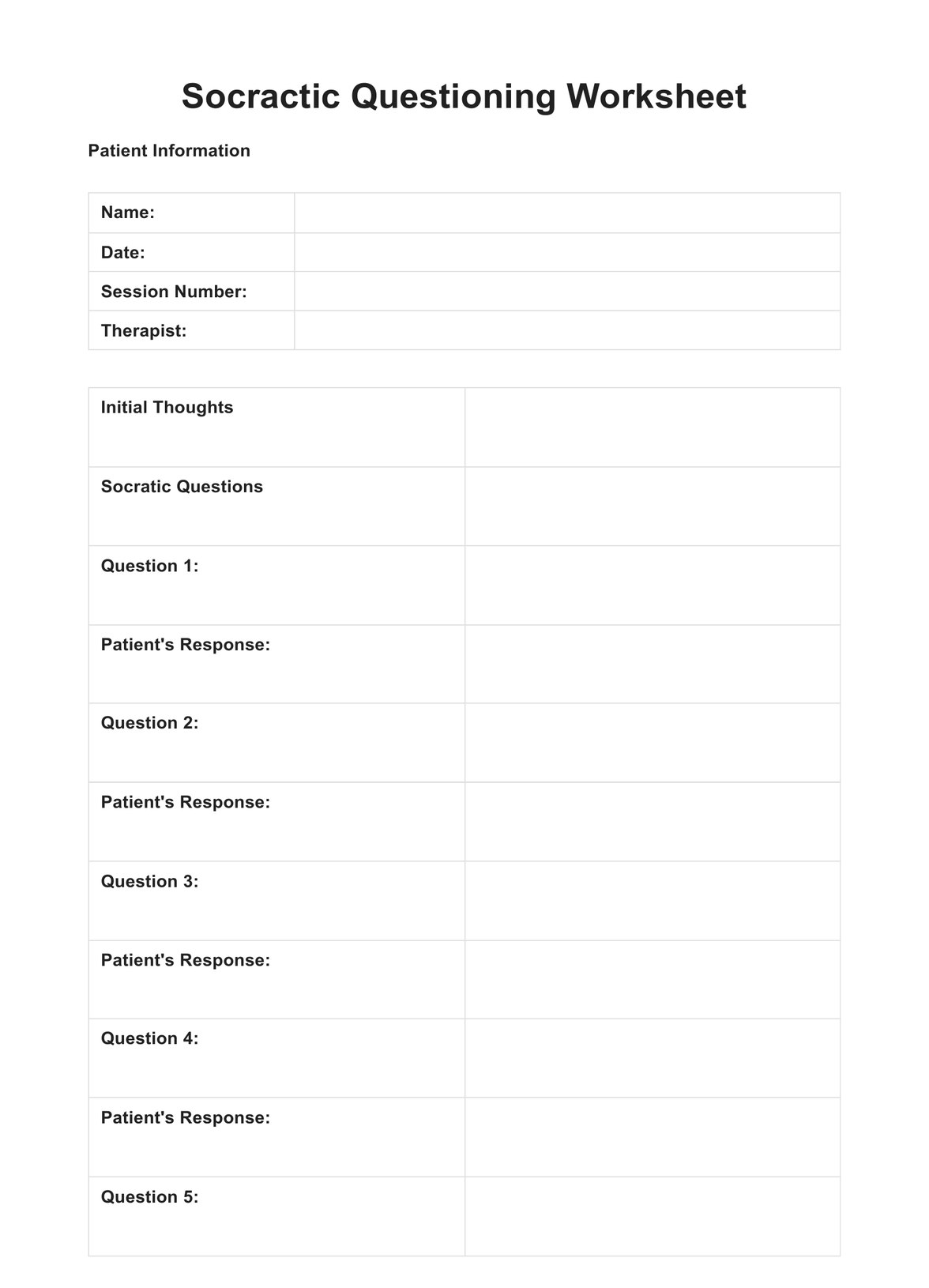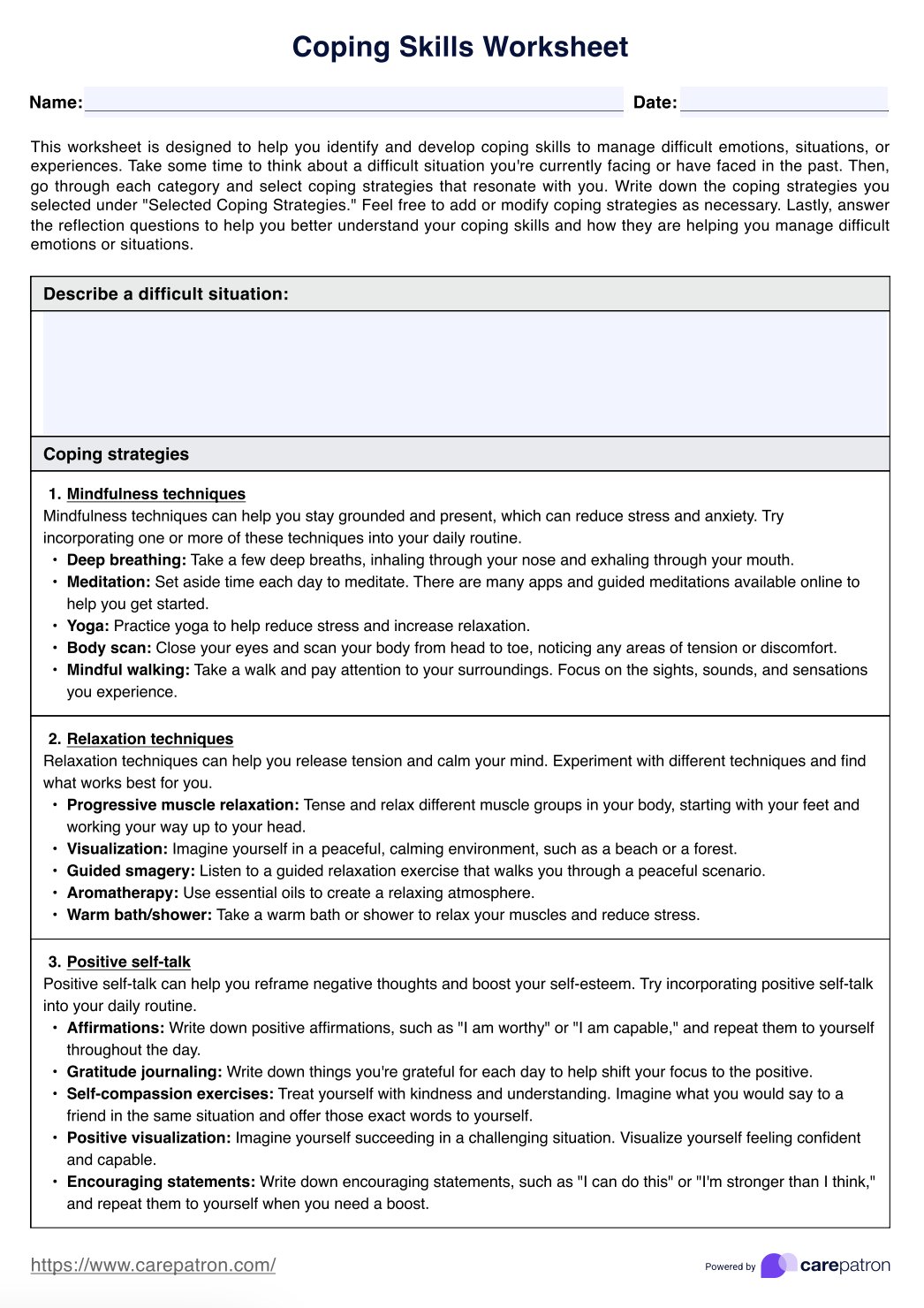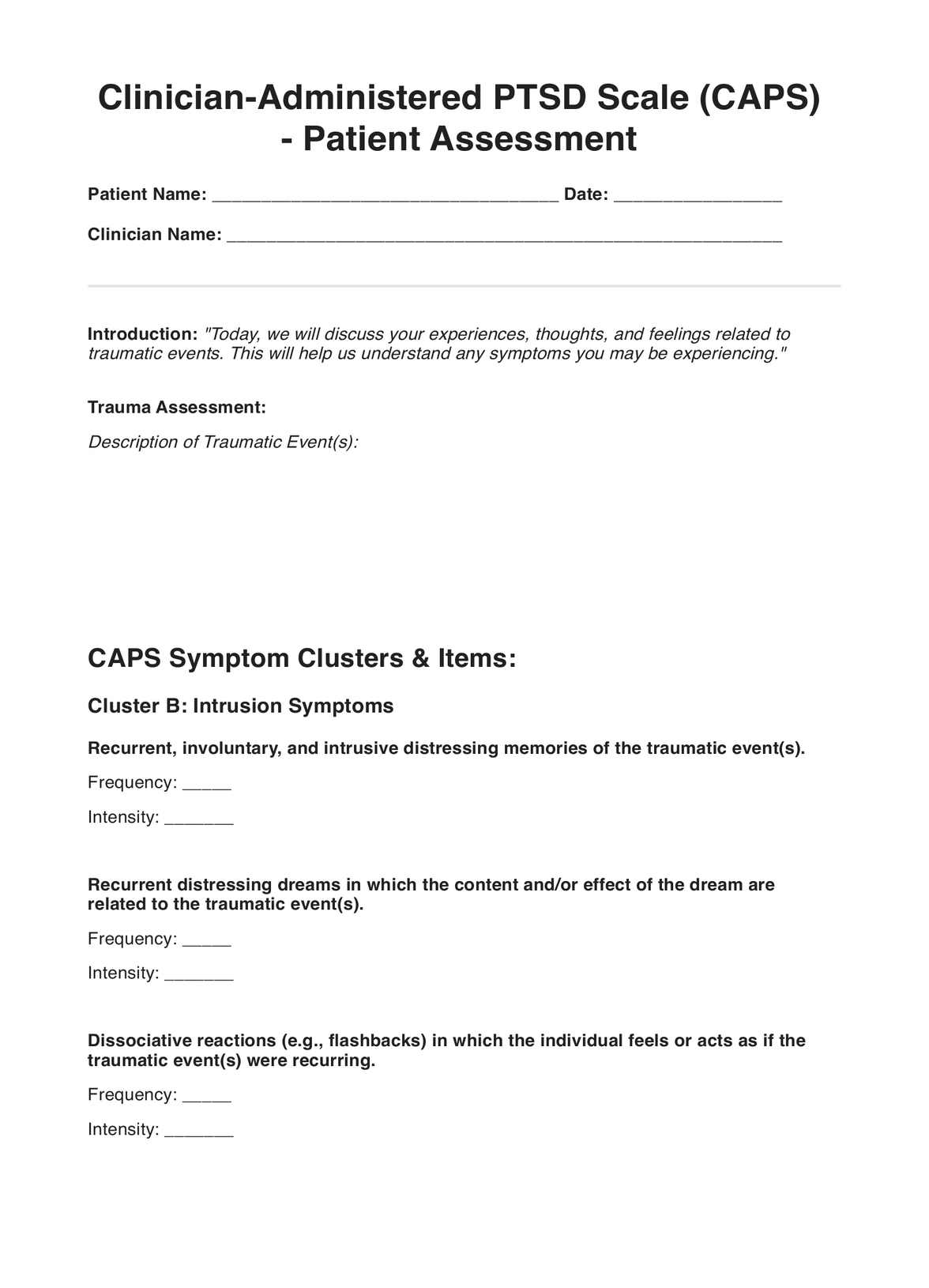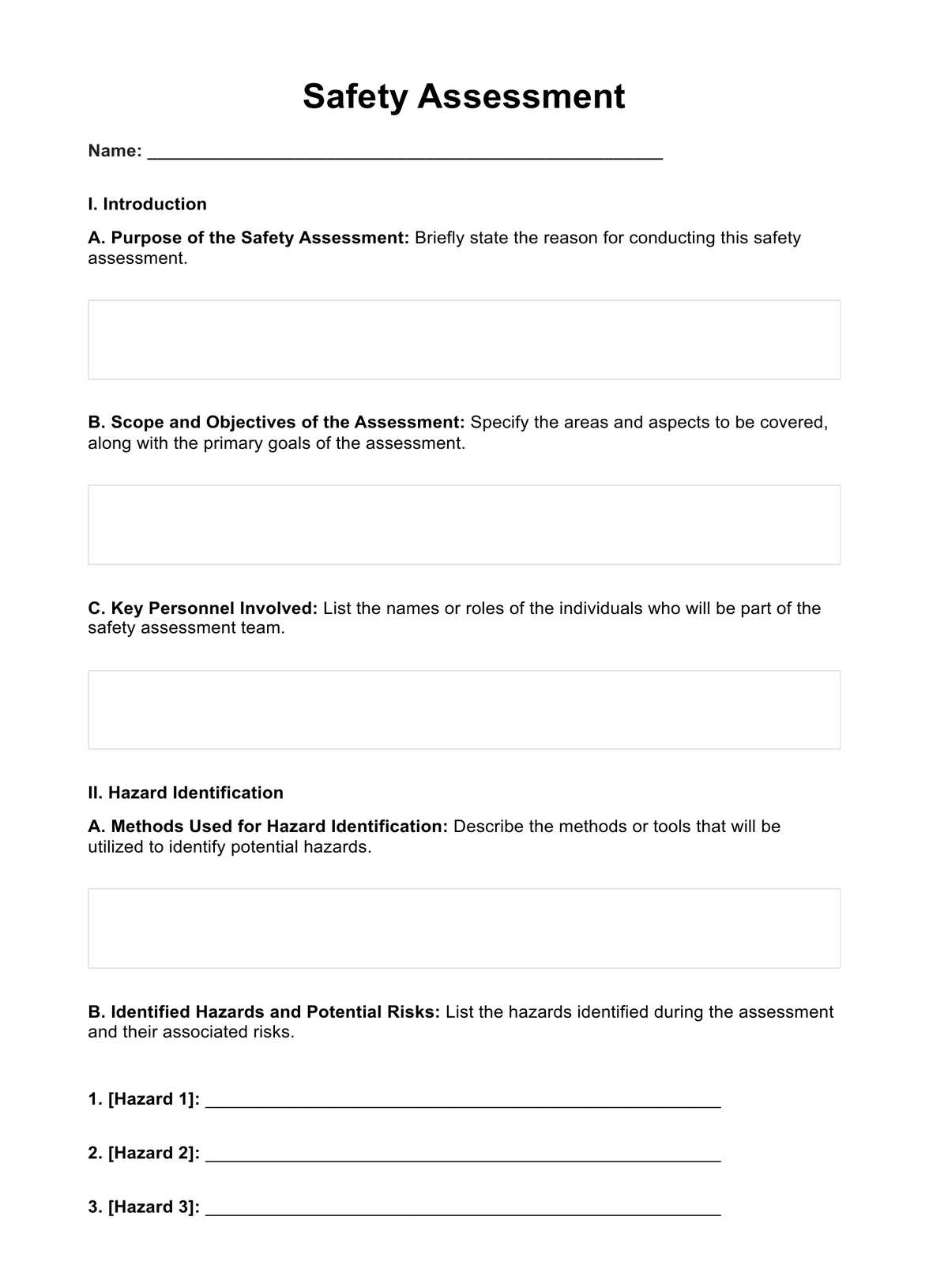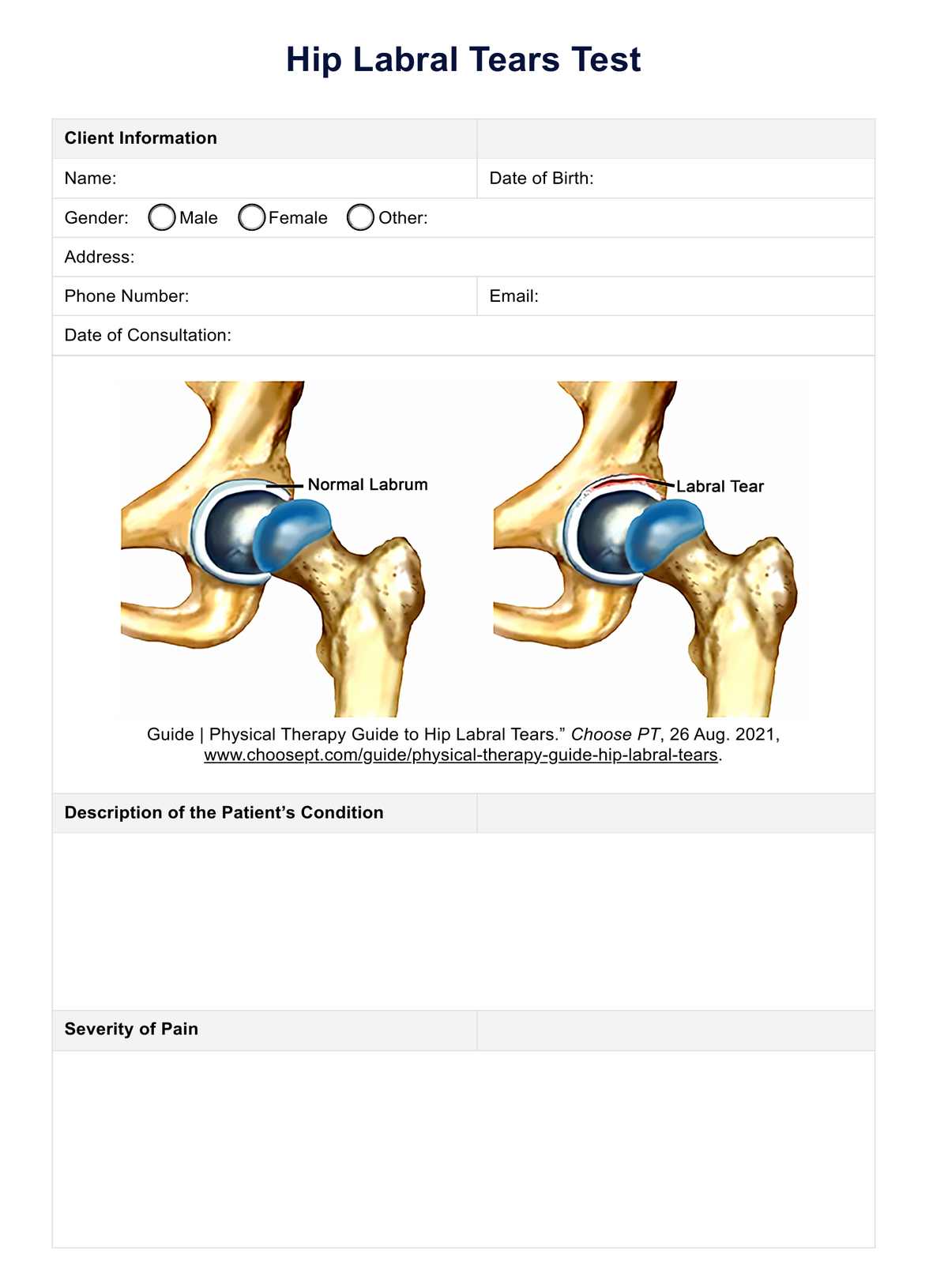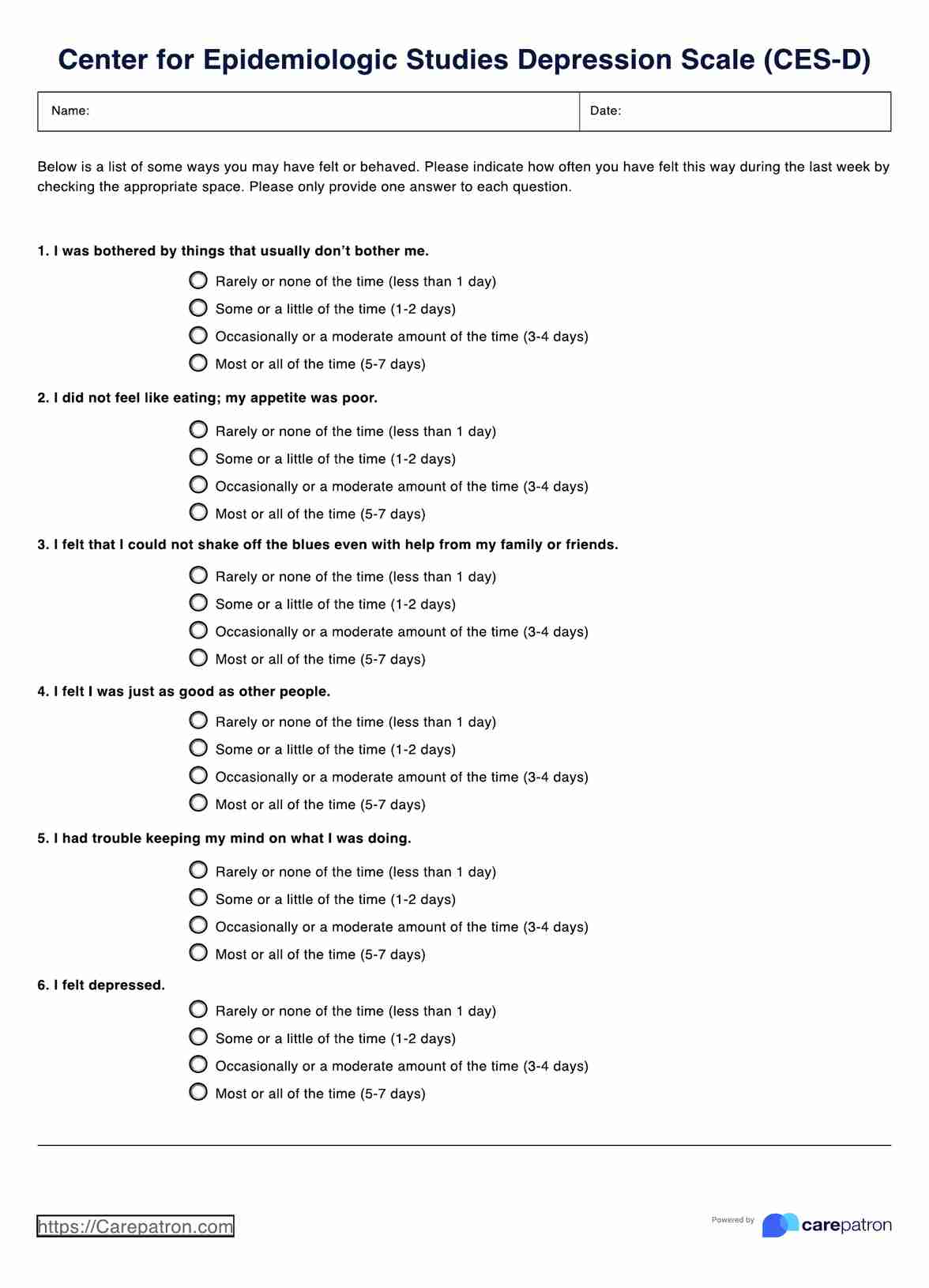Mindfulness Attention Awareness Scale
Discover the Mindful Attention Awareness Scale (MAAS) and its role in enhancing mindfulness, with a detailed guide and example for mental health professionals.


What is the Mindful Attention Awareness Scale (MAAS)?
The Mindful Attention Awareness Scale (MAAS) is a psychological assessment tool influenced by self-determination theory. It is designed to measure an individual's state of mindfulness. It's particularly useful in assessing adolescent mindfulness but also works with adults. Introduced in 2003 by psychologists Kirk Warren Brown and Richard M. Ryan, the MAAS has become a fundamental tool in social psychology, integral in mindfulness research and application within mental health practices.
The MAAS was born out of the need to quantify the abstract concept of mindfulness, a key aspect of human consciousness, which had traditionally been a subjective and experiential phenomenon. It provides a standardized method to assess how consistently an individual is present and aware in their day-to-day activities instead of operating on 'automatic pilot' or being lost in thought.
In mental health practice, the MAAS plays a crucial role. It is used to evaluate a person's baseline level of mindfulness, helping therapists identify areas where clients may benefit from increased present-moment awareness. This is particularly relevant in addressing conditions such as anxiety, depression, and stress-related disorders, where heightened mindfulness can lead to significant therapeutic improvements.
The scale consists of a series of statements to which individuals respond, providing insight into their everyday experiences of attentiveness and presence. It helps professionals diagnose, plan, and evaluate therapeutic interventions focused on enhancing mindfulness and related aspects of mental health.
Mindfulness Attention Awareness Scale Template
Mindfulness Attention Awareness Scale Example
What does the Mindful Attention Awareness Scale measure?
The Mindful Attention Awareness Scale (MAAS) measures trait mindfulness, also known as dispositional mindfulness, a mental state characterized by heightened awareness of the present moment. Mindfulness involves paying attention to current experiences in a purposeful and non-judgmental manner. The MAAS specifically assesses the frequency of mindful states in everyday life.
Mindfulness is crucial, as it significantly impacts a person's daily life. Mindfulness allows individuals to engage fully with their experiences, thoughts, and emotions without getting caught up in reactive patterns. It helps recognize and remove automatic thoughts and behaviors, fostering a deeper connection with the present moment.
The lack of mindfulness can lead to various consequences. When people are not mindful, they are more likely to react impulsively, miss out on life's details, and experience increased stress and emotional reactivity. This can exacerbate mental health issues like anxiety and depression and hinder one's ability to cope with daily stressors.
The benefits of being mindful
Mindfulness, the practice of being fully present and engaged in the moment, offers a range of benefits that significantly enhance mental, emotional, and physical health, contributing to overall psychological well-being. Here's how being mindful can positively impact various aspects of life:
Reduces stress
Practicing mindfulness helps in managing and reducing stress. Individuals can alleviate worries about the past or future by focusing on the present, promoting a more relaxed and peaceful state of mind.
Improves emotional regulation
Mindfulness enhances the ability to recognize and regulate emotions. This improved emotional intelligence enables individuals to respond more effectively to emotional challenges, fostering resilience and mental health.
Enhances focus and concentration
Regular mindfulness practice sharpens focus and concentration. It aids in maintaining attention on tasks, leading to improved productivity and mental clarity in personal and professional settings.
Boosts physical health
Engaging in mindfulness activities has been linked to various physical health benefits. These include lower blood pressure, reduced symptoms of chronic pain, and a stronger immune system, contributing to overall well-being.
Strengthens relationships
Mindfulness can significantly improve interpersonal relationships, leading to a deeper understanding and empathy towards others. It encourages active listening, empathy, and genuine engagement, leading to deeper and more meaningful connections.
Cultivating mindfulness through various techniques benefits individuals on a personal level and enhances their interactions and relationships with others, making it a valuable practice in mental health care.
How to use our template
The Mindfulness Attention Awareness Scale (MAAS) template is a valuable tool for mental health professionals to assess mindfulness in their clients. Here's a guide on how to effectively use this template in your practice:
Step 1: Access our template
Access the printable Mindfulness Attention Awareness Scale template on the free Carepatron app. This standardized tool offers a consistent framework for measuring mindfulness levels. You can also customize it to fit your workflow or your needs.
Step 2: Explain the template to the patient
Clearly explain the purpose of the MAAS to your client. Ensure they understand how to respond to each item and the importance of honest self-assessment.
Step 3: Guide the client through the questionnaire
Assist your client in completing the MAAS. Encourage them to think about their daily experiences and habits as they respond to each statement, enhancing their self-awareness.
Step 4: Analyze the results
Once the client has completed the MAAS, calculate the total score. Use this score to assess their level of mindfulness and identify areas for potential improvement.
Step 5: Discuss the findings with the client
Engage in a meaningful conversation about the results of the MAAS. Explore how their mindfulness level impacts their daily life and mental health. Use this discussion as a foundation for therapeutic work.
Step 6: Develop a mindfulness plan
Based on the MAAS results, collaborate with your client to create a tailored plan for practicing mindfulness. This might include specific mindfulness exercises, guided meditation, or incorporating mindful practices into daily routines.
Step 7: Monitor progress
Regularly revisit the MAAS with your client to track their progress in mindfulness practice and adjust the plan as necessary.
Implementing the MAAS template in your practice can lead to significant insights and improvements in your clients' mindfulness, contributing to their overall mental health and well-being.
How does the scoring work?
The Mindful Attention Awareness Scale (MAAS) scoring is straightforward yet insightful. Each item on the MAAS is rated on a 6-point scale ranging from 1 (Almost Always) to 6 (Almost Never). The scores for each item are totaled to get a composite score, with a higher total score indicating a higher level of mindfulness.
This scoring system allows mental health professionals to gauge the frequency of mindful awareness in various aspects of a client's life. The MAAS is designed so that lower scores correspond to less frequent mindfulness, reflecting a tendency toward automatic or distracted states of mind.
Interpreting the results
Interpreting the results of the Mindful Attention Awareness Scale (MAAS) involves understanding the different ranges of mindfulness as indicated by the scores:
Low mindfulness
Scores in the lower range suggest a tendency towards less mindfulness. Clients with these scores may often find themselves distracted, operating on 'auto-pilot,' and not fully engaging with the present moment.
Moderate mindfulness
Middle-range scores indicate a moderate level of mindfulness. These clients may sometimes be present and aware but also experience frequent periods of distraction or automatic behavior.
High mindfulness
High scores on the MAAS reflect a strong presence of mindfulness in daily life. These individuals typically demonstrate a consistent ability to stay focused and aware in the present moment.
The next steps
After interpreting the score, mental health professionals can proceed with the following steps:
Show the patient mindfulness exercises
Introduce mindfulness exercises to the client, such as mindful breathing, meditation, or body scans. Tailor these practices to the client's needs and preferences. For other mindfulness activities for adults, you can refer to this handy guide.
Develop a mindfulness practice plan
Work with the client to develop a regular mindfulness practice schedule. This plan should be realistic, achievable, and aligned with the client's lifestyle.
Monitor and adjust
Regularly check in with the client to monitor their progress in mindfulness practices. Adjust the plan as needed based on their feedback and changing circumstances.
Integrate mindfulness into daily life
Encourage the client to find opportunities to practice mindfulness in everyday activities, like eating, walking, or during routine tasks.
Review MAAS scores periodically
Re-administer the MAAS periodically to assess changes and improvements in the client's mindfulness levels.
By following these steps, mental health professionals can effectively guide their clients in enhancing mindfulness and improving overall mental health and well-being.
A look at the validity and reliability of the MAAS
The MAAS has been extensively studied for its reliability and validity, including through confirmatory factor analysis to establish its psychometric properties. Research by Brown and Ryan in 2003 has demonstrated high test-retest reliability, discriminant and convergent validity, known-groups validity, and criterion validity of the MAAS. The scale has shown high internal consistency, test–retest reliability, and concurrent and incremental validity, with internal consistency levels (Cronbach's alphas) above 0.80 in both healthy and psychiatric populations. Subsequent research has also explored its use in adolescent normative populations.
In 2005, Carlson and Brown conducted a study to validate the Mindful Attention Awareness Scale (MAAS) in a cancer population. The study aimed to examine the construct and criterion validity of the MAAS in cancer outpatients, using matched community members as controls. The study involved 245 cancer outpatients who self-referred to the Mindfulness-Based Stress Reduction (MBSR) program at the Tom Baker Cancer Centre in Calgary, Canada. The researchers compared the factor structure and internal consistency of the MAAS in two matched samples: cancer outpatients and community members.
References
Brown, K. W., & Ryan, R. (2019). Mindful attention awareness scale | positive psychology center. Upenn.edu; Penn Arts and Sciences. https://ppc.sas.upenn.edu/resources/questionnaires-researchers/mindful-attention-awareness-scale
Carlson, L. E., & Brown, K. W. (2005). Validation of the mindful attention awareness scale in a cancer population. Journal of Psychosomatic Research, 58(1), 29–33. https://doi.org/10.1016/j.jpsychores.2004.04.366
Commonly asked questions
The Mindful Attention Awareness Scale (MAAS) is a psychological tool used to measure an individual's mindfulness level, assessing their ability to maintain attention and awareness in daily life.
Yes, the Mindful Attention Awareness Scale is both reliable and valid. Extensive research, including studies by Brown and Ryan, has demonstrated its high internal consistency, test-retest reliability, and validity in various populations.
The MAAS score is interpreted by adding the ratings of all items, with a higher total indicating a higher level of mindfulness. Lower scores suggest a tendency towards less mindfulness and being more distracted or automatic in daily activities.


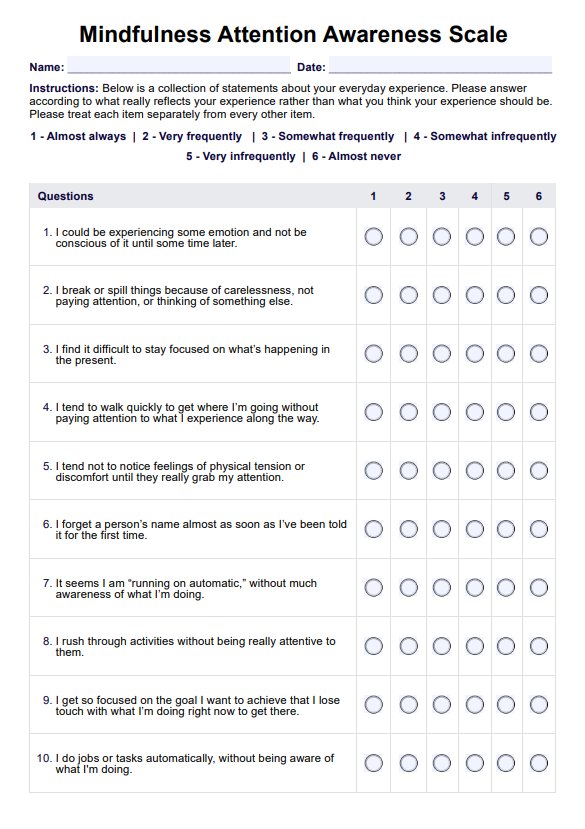
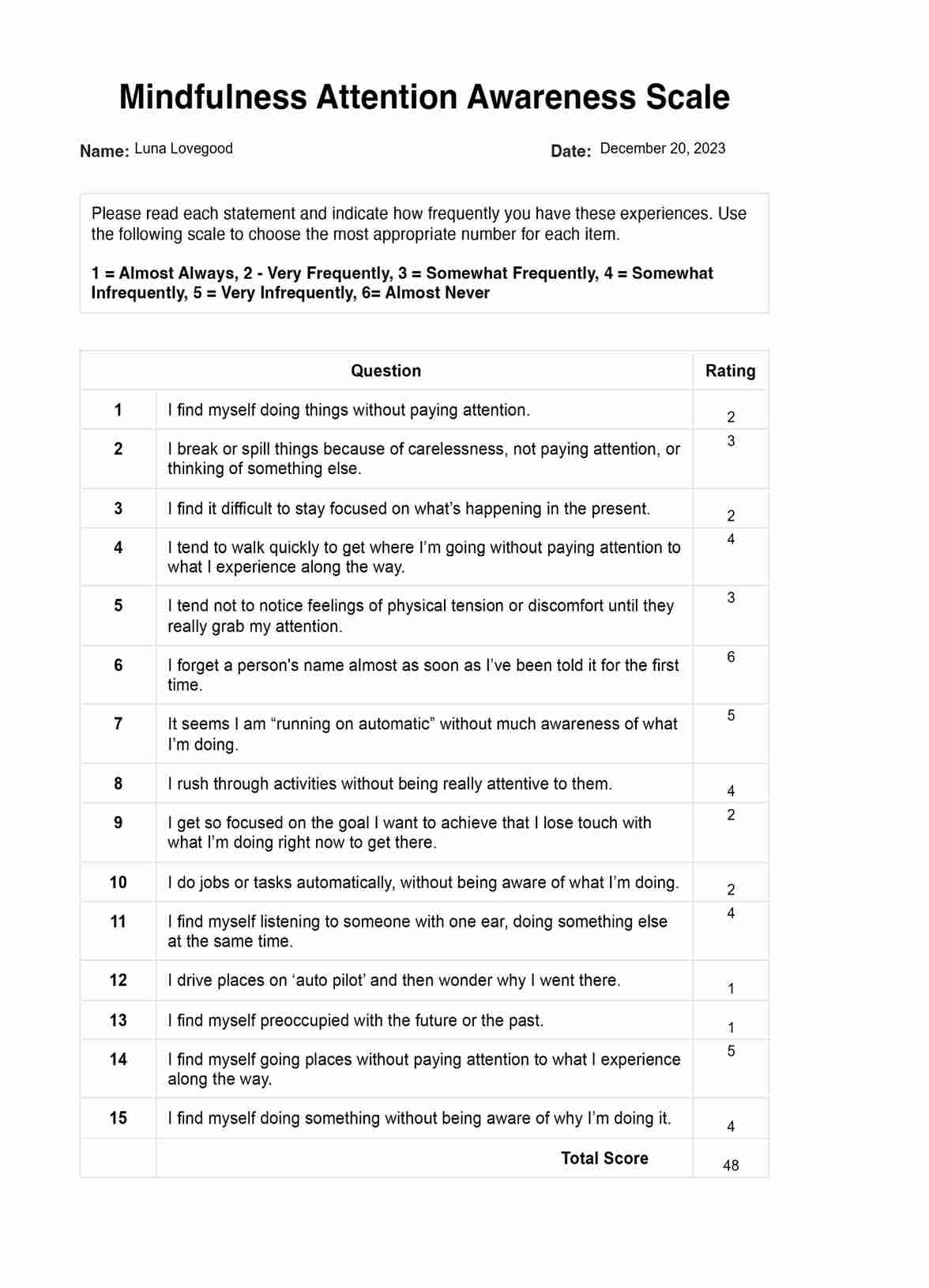

















-template.jpg)



















































































